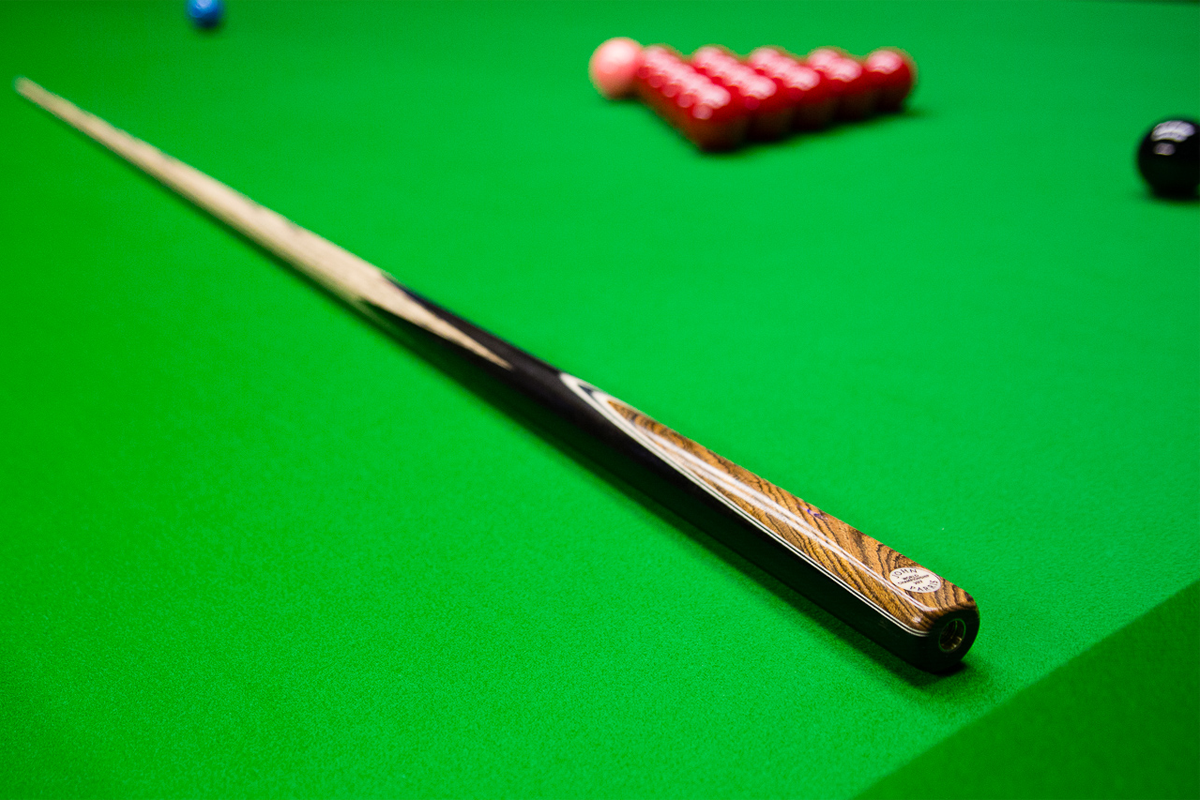The snooker cue, a slender instrument of precision, lies at the heart of the gentleman’s game. Its purpose is singular and profound: to guide the player’s skill and technique in manoeuvring the spherical ivory or resin balls across the green baize. This unassuming tool belies a rich history and intricate craftsmanship, a testament to the game’s esteemed heritage.
In this article, we will delve into the world of the snooker cue, exploring its evolution, construction, and the profound impact it has on a player’s performance.
The Evolution of the Snooker Cue
The Journey from Mace to Cue
The evolution of the snooker cue is intertwined with the history of cue sports themselves. The precursor to the modern snooker cue was the mace, a broad-headed instrument used in early billiards games. As snooker gained popularity in the latter half of the 19th century, players began to experiment with different cue designs, ultimately leading to the development of the narrow-tipped cue we recognize today.
The transition from mace to cue marked a pivotal moment in the game’s history. With its refined shape and focused striking surface, the snooker cue allowed for greater precision and control, revolutionising the way the game was played.
Materials and Construction
Today, snooker cues are predominantly crafted from a selection of carefully chosen woods, each offering distinct characteristics. Common woods include ash, maple, and ebony, with the shaft typically made from ash for its strength and flexibility, and the butt often fashioned from denser woods for stability.
The cue’s tip, a crucial element, is traditionally made from leather. This small yet pivotal component is meticulously shaped to ensure optimal contact with the ball, striking a delicate balance between grip and finesse.
Length and Weight
Snooker cues vary in length, with the standard size measuring around 57-58 inches. The choice of length is a matter of personal preference, with some players opting for longer cues to enhance reach, while others prefer a slightly shorter length for greater control.
Weight is another crucial factor. Cues typically range from 16 to 20 ounces, with players selecting a weight that complements their playing style. A heavier cue can provide more power, while a lighter one allows for finer control and manoeuvrability.
In conclusion, the evolution of the snooker cue reflects not only advancements in cue sports but also the dedication of craftsmen to perfecting this essential tool.
The Anatomy of a Snooker Cue
Understanding the Components
To appreciate the snooker cue’s craftsmanship, it’s imperative to dissect its anatomy. A cue consists of three primary components: the shaft, the butt, and the tip.
The Shaft:
- Crafted from a select wood, often ash for its resilience and flexibility.
- Tapers to a fine point, providing a precise striking surface.
- May be adorned with decorative inlays or engravings for aesthetic appeal.
The Butt:
- Comprises the lower portion of the cue.
- Made from a denser wood for stability and weight.
- Often features intricate designs or finishes for visual allure.
The Tip:
- Traditionally crafted from leather.
- Shaped to provide optimal contact with the ball, influencing spin and control.
- Regular maintenance is crucial to ensure consistent performance.
Balance and Feel
The balance of a snooker cue is a critical consideration for players. It refers to the distribution of weight along the length of the cue. A well-balanced cue ensures a smooth, controlled stroke, while an imbalanced one can lead to inconsistencies in play.
Additionally, the feel of a cue is subjective and deeply personal to each player. It encompasses factors such as grip, weight, and overall comfort, all of which contribute to a player’s confidence and performance on the table.
Selecting the Perfect Snooker Cue
Choosing a snooker cue is a highly individualised process. Factors such as playing style, physique, and personal preference all come into play.
- Playing Style:
- Aggressive players may prefer cues with a stiffer shaft for powerful shots.
- Those favouring finesse may opt for a more flexible shaft for delicate control.
- Physique:
- Taller players may benefit from a longer cue for extended reach.
- Smaller players might find a slightly shorter cue offers greater manoeuvrability.
- Personal Preference:
- The weight, balance, and feel of a cue should align with the player’s comfort and confidence.
A reputable cue maker or knowledgeable retailer can offer invaluable guidance in the selection process.
| Wood Type | Characteristics |
|---|---|
| Ash | Flexible, resilient, commonly used for shafts. |
| Maple | Smooth grain, offers a balance of strength and flexibility. |
| Ebony | Dense, provides stability and weight, often used for butts. |
| Rosewood | Durable, known for its rich, dark hues, used for aesthetic appeal. |
The snooker cue, though seemingly unassuming, is a cornerstone of the game’s elegance and precision. Its evolution from the humble mace to the refined instrument we know today is a testament to the dedication of cue sports enthusiasts and craftsmen alike. Understanding the anatomy and selecting the perfect cue is a personal journey for every player, a fusion of style, technique, and individual preference.
As the cue meets the ball on the green baize, it embodies the culmination of skill, history, and craftsmanship, underscoring the timeless allure of snooker.

